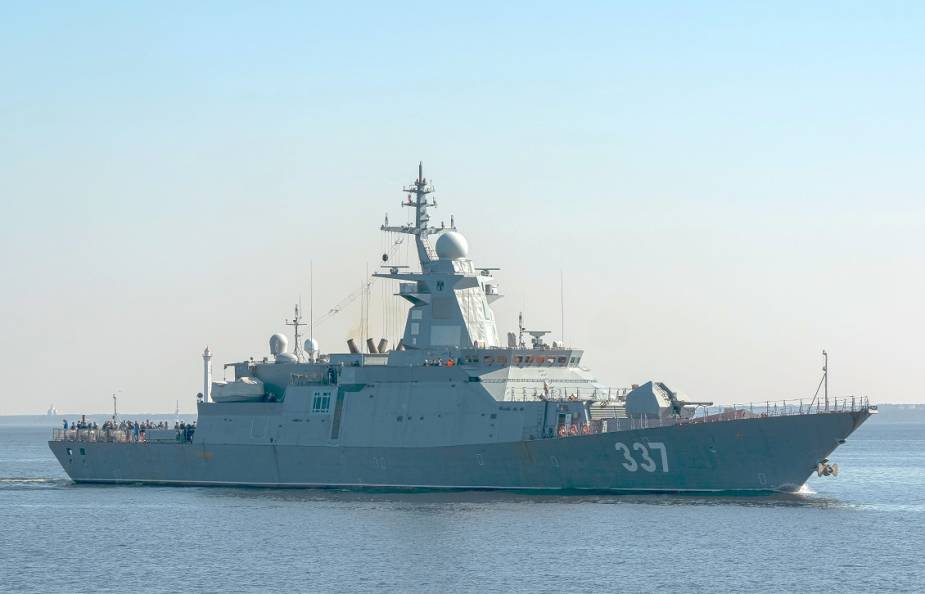The Project 20385 lead corvette Gremyashchy has sailed from Baltiysk to St. Petersburg after it completed its state trials, the Defense Ministry’s press office said : “The crew and the trial team will carry out work at the berth of the Severnaya Verf Shipyard to prepare the corvette for joining the Navy and for the flag-raising ceremony”.
Follow Navy Recognition on Google News at this link
 Project 20385 lead corvette Gremyashchy (Picture source: Severnaya Verf)
Project 20385 lead corvette Gremyashchy (Picture source: Severnaya Verf)
The corvette will be made operational with the Navy after all of its mechanisms and systems are checked. The ship is planned to join the Navy in late December.
During the final stage of the state trials in the Baltic Sea, the crew fired the Redut air defense missile system, AK-190 and AK-630 artillery systems against a practice target imitating an adversary antiship cruise missile. The target was hit with air defense missiles fired by the corvette.
Earlier, the Gremyashchy corvette fired Kalibr (NATO reporting name: SS-N-27 Sizzler) and Oniks (SS-N-26 Strobile) cruise missiles against a coastal and seaborne target in the White Sea. It conducted artillery and torpedo live-firing in the Barents Sea.
The Gremyashchy corvette is the Project 20385 lead ship laid down by the Severnaya Verf Shipyard on February 1, 2012 and launched in June 2017. The ship is designed for the Pacific Fleet. Project 20385 differs from its predecessor by greater dimensions and displacement. They have a steel hull and composite superstructure, with a bulbous bow and nine watertight subdivisions. Compared with the Soobrazitelny, Boikiy, Sovershennyy and Stoikiy ships, which are fitted with Redut air defense VLS system of 12 launchers on the bow, these new ships are equipped with a UKSK VLS system comprising eight launchers for either Kalibr, Oniks or Zircon anti-ship/cruise missiles. The Redut VLS system with 16 launchers has been placed on the stern. Another difference is the lack of the aft mast above the helicopter hangar, and single integrated mainmast that no longer includes separate open shelves for artillery and navigation radars.



